Seeing a flock of chickens running in the backyard or mingling with other farm animals can be quite satisfying. All the more so, when these birds are a product of your own energy, time, and money. Raising chickens can be quite lucrative when it is done correctly.
Oftentimes, people wonder how to start raising chickens without breaking the bank, while making sure they can successfully keep their chickens growing from just a few birds to large flocks. This is where knowledge comes before execution.
Before you get started, there is some key information that you should know about raising your own chickens.
This is the ultimate guide to raising chickens, be it as a hobby or for a large-scale business.

1. Choose the right chicken breeds
First and foremost, you have to determine your objective for raising your own chickens. There are hundreds of chicken breeds out there and not all carry the same purposes. They also come in different colors and sizes.
Some breeds are great layers while others are primarily raised for their meat. Then, there are dual-purpose breeds and ornamental breeds that make beautiful pets for exhibition purposes.
For instance, breeds like Plymouth Barred Rocks, Blue Andalusians, Rhode Island Reds, and Easter Eggers are prolific layers compared to Cornish Cross, Orpington, and Jersey Giant, which are suitable for meat production.
But if you are looking to have the best of both, breeds like Sussex, Buff Orpingtons, or Wyandotte would be your go-to chickens.
After that, comes other factors that you should consider including:
Personality
Everyone loves chickens that are easy to raise and won’t give their owners a hard time. Plus, if you have a family and small children, that is another reason why you should choose your preferred breeds wisely.
Bantam breeds mingle easily with kids and are less intimidating to other small animals. If you want chickens that are friendly and easy-going, then Silkies, Cochins, Brahmas, or Faverolles would be the best choice.
Environment
Depending on where you live, you have to raise chickens that can adapt to the current climate. For instance, breeds like Cochins, Buff Orpingtons, Brahmas, Wyandottes, or Australorps can withstand cold climates.
But if you are living in a warmer and humid area, then Leghorns, Andalusians, Penedensecas, or Minorcas would thrive in this type of environment. Then there are those breeds that are hardy and are able to thrive in both climates.
Egg Production
Different breeds produce different numbers of eggs per week. The egg sizes and colors may also vary.
Avoid bantam chickens if you prefer larger eggs. Go for breeds like Rhode Island Reds, Delawares, Sussex, Leghorns, and Australorps. Not only their eggs are large, but they could produce up to 6 eggs per week in their laying seasons.
Check for permits and regulations in your living area
If you have a large parcel of your own land, then this may not be as much of an issue. But if you are living in suburbs or small towns, then the wise thing to do would be to check the law, regulations, and ordinances of keeping your own chickens.
Different areas might have a different number of chickens that you can keep at once. Some areas don’t allow rooster-keeping because they are prone to produce loud noise that could disturb the whole neighborhood, especially in town.
The last thing you want is to have the authorities coming over to your house and taking down everything that you have built.
Start With A Baby Chick
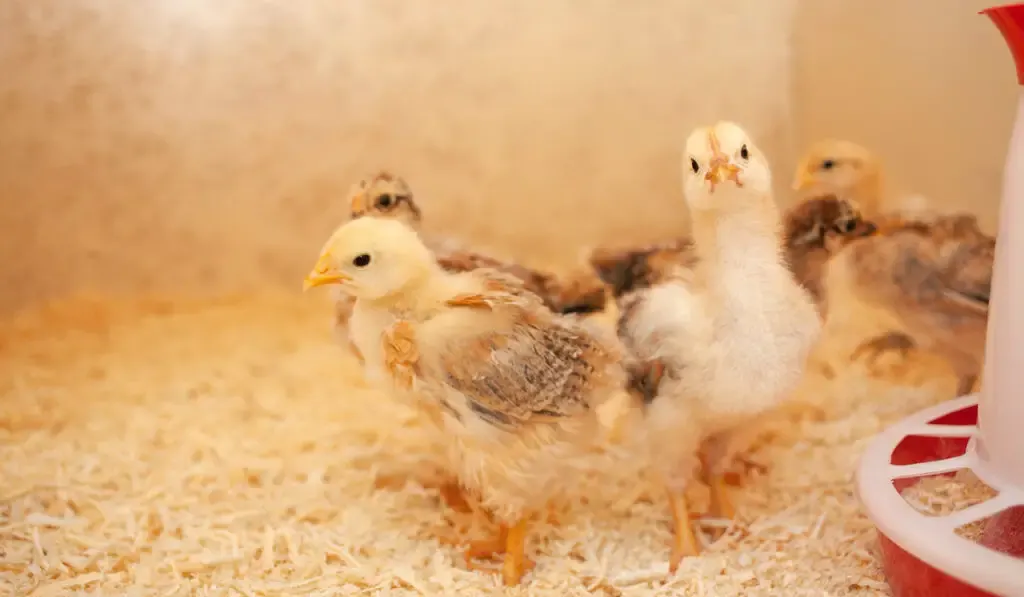
Your journey towards having a large flock of chickens starts with a baby chick. And you might wonder: why can’t you just buy mature hens and let them lay eggs? Simply put, raising hens takes a lot of work, experience, and definitely more money.
It can be quite stressful when you have to deal with broody hens. Then, you can’t predict how many of those eggs will hatch into roosters or hens. So, you will have to plan wisely.
When you start with chicks, they definitely cost less. But this only applies to common breeds. When you buy chicks of rare breeds, they could cost more, especially female chicks.
The best choice is getting chicks that are a few days old because they are much healthier and easy to handle. Any hatcheries and breeders will sell chicks at a price between $3 to $5 each, excluding delivery fees.
Another thing to consider when raising baby chicks is the environment they can comfortably live in. Generally, most chicks require starter feed, clean water, and a draft-free brooder pen equipped with red brooder lamps that could maintain the surrounding temperature at 92°F (33°C).
This temperature must be reduced by 5°F each week until they reach 6 weeks old. On the other hand, if you still think raising chicks is quite a hassle, you can also purchase pullets, which are chicks that are between 8 to 20 weeks old. Although they are more expensive than the younger ones, they will lay eggs sooner and be easier to keep.
Building A Chicken Coop
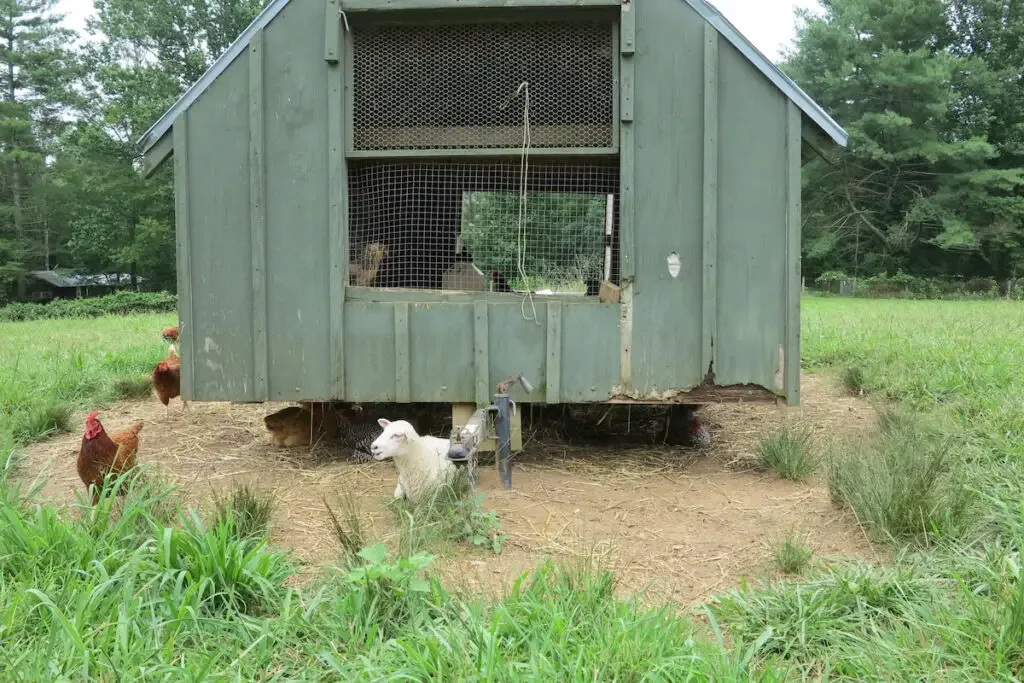
There are numerous options for chicken coops that you can buy. Some of these pre-made coops are built from materials like plastics, wood, or recycled materials. Depending on their sizes and shapes, most of them cost around $200 to $400.
You can also purchase second-hand coops from other farmers. But of course, they are used and might not last for a long time.
Speaking of durability, you should take into account the materials that these coops are made of. For instance, wooden coops are easy to repair but plastic coops are much more durable. Plastic coops are lighter compared to heavy wooden coops that could withstand windy seasons.
Of course, everything is based on your preference and how you want your chickens to live. You can also make your own coops from any recycled wood or items, only if you don’t mind spending some time to built them.
After that, comes other important things that you should consider which are:
The size of the coop
The overall size of the coop is totally up to you but generally, one chicken will need around 3 to 4 square feet of interior coop floor space. Aside from comfortability, you can avoid any sick chickens from having close contact with the healthier ones thus reducing the chance of having the entire flock getting sick.
Form and features
A coop is not just an empty wooden house. There are some features that you should provide, both for the hens and roosters. For instance, one nest box is required for every three hens.
This is a box that measures around one-foot square and it should be placed at a lower level for easy access. For your roosters, roosting bars that measure around 1.5 inches thick should be installed for them to go up onto at night and roost.
Location
Think of the coop as a home for your chickens. And home should be built in a proper and safe location. The best location to place or build a chicken coop would be somewhere close to your home. Aside from easy monitoring, you can quickly tend to their needs if anything happens.
Then, the coop should also be built on higher ground to avoid unwanted situations like a moisture build-up that can make your chicken sick or worse, flooding.
Safety and protection
Last but not least, safety should be the main focus when getting chicken coops. Aside from their materials, a door is necessary for the chickens to move through and to allow you access. This will also protect your birds from any predators that love to lurk at night.
Depending on the overall size of the coop, this door can be easily made using a piece of thick plywood, secure latches, and strong hinges. The floor should also be made from strong materials to sustain the weight of all the chickens.

Regularly clean and sanitize the coop
There is no point in having a big, beautiful coop if it is dirty and could potentially make your chickens sick. Cleaning their coop regularly is the simplest yet the best thing you should always do. At least once a week, you can do these things:
Clean and disinfect the floor
Any waste, fecal matter, or debris should be completely removed from the floor. You don’t have to make it squeaky clean. Just be sure that the floor is completely free from dirt and comfortable enough for chickens to walk or sit on.
You can also use any household disinfectants that are free from toxic chemicals and won’t leave residual films. For instance, a mixture of 5 to 10% bleach and 90% clean water can definitely work.
Clean up any dirty nesting boxes, feeders, waterers, and roosting bars
There is a possibility that your hens won’t lay in a dirty nesting box. Cleaning them regularly will ensure the hens can comfortably sit and lay eggs prolifically.
The feeder and waterer are other important things that should always be kept clean. There is nothing worse than giving dirty, fouled water to your chickens.
When cleaning the waterer, use white vinegar instead of cleaning products. This avoids any chemicals that could potentially irritate the chickens.
Lastly, you might notice some poop on the roosting bars. Aside from scraping it off, you can also use a water hose and spray the poop off. Be sure to wear a face mask and gloves to protect yourselves from bacteria and debris.
Prepare a complete feeding schedule and diet plan.
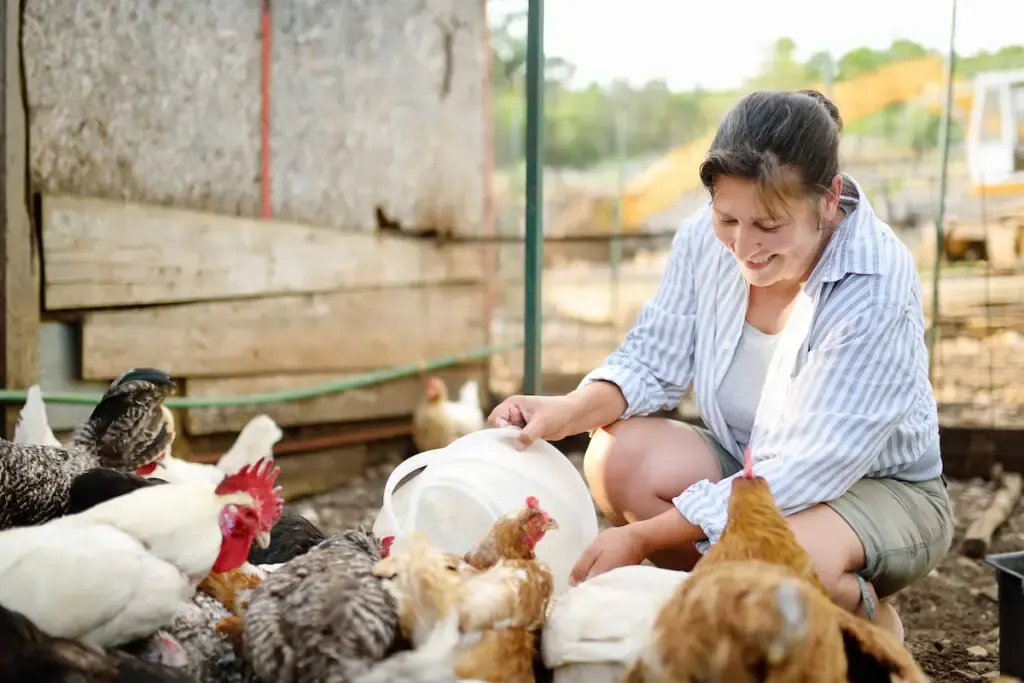
The development of chickens can be divided into three categories: chick, grower, and layer. Every stage requires a different diet and feeding habits, but they consist of balanced poultry feed. For instance, organic chick feed is generally high in protein that is essential for their growth.
This feed comes in crumble form that is easy to digest. You can also purchase medicated feed that offers additional protection from coccidiosis that could make your chicks sick.
For grower chicks, they don’t need as much protein in their diet. Grower feed usually comes in crumble or pellet forms. Both types contain the same amount of nutrients and are completely digestible. You can prepare both feeds and let the chicks choose. Some might prefer one over the other.
Layer chickens are fully mature and grown completely into hens or roosters. For this reason, their feed contains a high amount of calcium but the same amount of protein as the grower feed.
In this stage, calcium is important to keep their bones healthy and assists in the production of strong eggshells. Aside from crumble and pellet, layer feed also comes in organic and whole-grain formulas.
Adult chickens eat approximately half of a cup per day. If the flock doesn’t eat all you offer, you can leave the feed for quite a long time before refilling. Grit should also be provided, which is around 10% of their diet. These small stones assist in a better digestion process.
Depending on where you live, all of these feeds might vary in price and availability. Organic feed can be purchased for $35 per 25-pound bag, while whole grain feed is sold for around $25 to $35 per 25-pound bag. The cheapest one would be the crumble or pellet, which are around $15 per 40- to 50-pound bag.
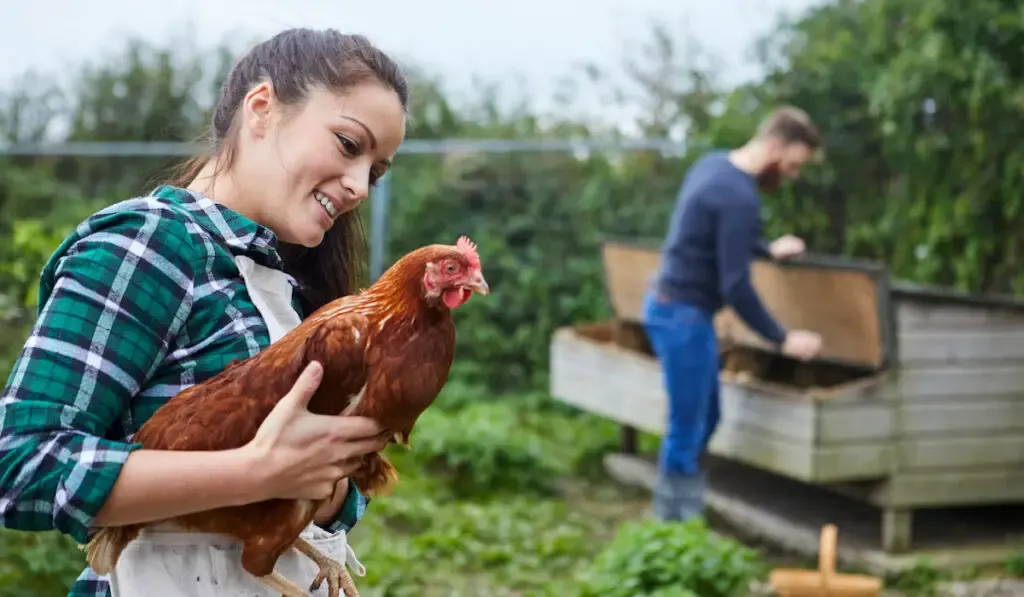
Keep a regular check on your chickens’ health
As chicken owners, keeping your chickens healthy should always be one of your top priorities. Frequent check-ups will prevent any serious illnesses that could lead to major health issues down the road.
Although most chickens are resilient to diseases, you can also look for signs of unhealthy chickens that suffer common problems such as:
Foot injuries
Foot injuries are common in chickens but can be quite hard to treat due to their active lifestyles. They can be caused by just a simple cut or a staph infection that leads to bumblefoot. Bumblefoot is one of the more common foot injuries in chickens.
It can be recognized by the formation of one or more pus-filled abscesses on the bottom of their foot. Most foot injuries can be treated with an antibiotic cream, antiseptic wound wash, and other topical creams. If further complications happen, then a trip to the vet is a must.
Pasty vent
Pasty vent or pasty butt can be caused by a stressful environment. This condition usually affects baby chicks and could lead to death without any treatment. Luckily, it is easy to detect and treat. Pasty vent happens due to the build-up of droppings around the chick’s tail.
These dried feces will make it hard for the chicks to pass any droppings because the vent is blocked. To treat this issue, all you need is a wet paper towel and slowly wipe the vent to remove the droppings.
Egg-laying problems
Egg-laying problems can be caused by many internal factors that are hard to detect without observing the behavior of the hens. These include parasitic diseases, bacterial infections, nutrient deficiency, and stress-induced conditions.
Other commons egg-laying problems that you can prepare for are soft-shelled eggs, egg yolk peritonitis, egg binding, egg drop syndrome, and many more. One way to combat this problem is by incorporating more calcium and protein into the chickens’ diet.
If home treatment does not work, then it is always necessary to take the chickens to an avian vet.
Bacterial infection
Symptoms of bacterial infection in chickens can be diagnosed when they suddenly behave very different. These behaviors include breathing problems, irregular or abnormal cycle of egg production, and swollen sinuses and faces. They could suffer from bacterial infections like salmonellosis that is caused by salmonella germs, colibacillosis from e. coli, and many others.
Dirty coops and unsanitized nesting boxes can also make the infections spread quicker and on a much larger scale. Although bacterial infections in chickens are less common, once they happen, the infections can be quite hard to deal with.
Parasitic infection
Parasitic infections are also caused by poor hygiene and unsanitized environments. Chickens are prone to becoming infected with worms, ticks, lice, and mites that live as parasites on their bodies. Symptoms of parasites in chickens can be recognized by skin irritation, loss of feathers and appetite, lethargy, weight loss, plus others.
One way to prevent this issue is cleaning the coops and spraying them with insecticides. You can also treat sick chickens with antiparasitic medications that are recommended by an avian vet.
Viral infection
Viral infections happen when one or a few chickens are infected with certain diseases and it spreads to infect the whole flock. Some of the highly contagious diseases are fowl pox, Newcastle disease, infectious bronchitis, and avian flu. Unlike other illnesses, viral infections can be quite hard to detect because the symptoms might not be noticeable without thorough monitoring.
These include coughing, sneezing, slow egg production, nasal and eye discharge, skin irritation, and other internal complications. By vaccinating your chickens, you can protect them from catching some of these diseases.
Fungal infection
Although fungal infections are rare in chickens, they are easy to diagnose and treat. For instance, ringworm and brooder pneumonia are the two most common fungal infections that can make your chickens sick. Ringworm appears on their comb as a thick and whitish foreign layer.
Meanwhile, brooder pneumonia only affects baby chicks and can be recognized when they have trouble breathing. Again, strict hygiene plays a major role to prevent this issue. Be sure to clean the coops, nesting boxes, and every other part of their living space regularly.
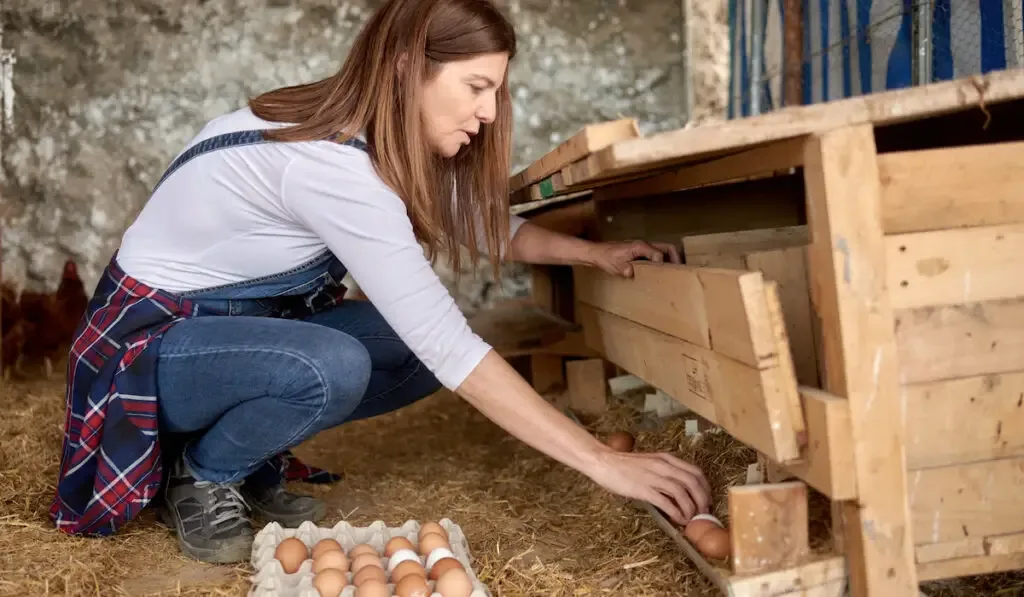
Collecting and storing chicken eggs
Once your chickens can finally lay eggs, then it is high time for you to reap the rewards of all your hard work. But don’t get too comfortable just yet, there are a few things that you should know when dealing with chicken eggs.
Depending on your schedule, you can collect the eggs daily or weekly. One of the benefits of collecting them regularly is that you can prevent the eggs from breaking when hens began to overcrowd the nesting boxes.
Protect yourself by wearing gloves when touching chickens or their eggs to avoid any direct contact with germs and bacteria. Then, carefully clean the eggs with a wet cloth.
You don’t necessarily have to wash the eggs thoroughly because eggshells have a natural coating that protects the eggs from bacteria. As a general rule of thumb, remove any visible dirt or stains on the eggs before storing them.
Avoid using cold water because it could shrink the eggs away from the shell and attract bacteria. Finally, store them in a fridge, on shelves, or in boxes with closed lids.
Final Thoughts
All of these steps will serve as guidelines for you to start raising your own chickens. With a clear and comprehensive long-term plan, it will be much easier for you to figure out everything, right from breed selection up until your chickens fully mature.
Don’t go hard on yourself if there is a hiccup along the way. What matters the most is the experience you will gain. Raising chickens is a challenge and one of the rewarding activities that you can do in your lifetime.
Citations
- https://www.purinamills.com/chicken-feed/education/detail/steps-on-how-to-start-raising-chickens
- https://wholefully.com/how-to-start-raising-backyard-chickens-in-7-simple-steps/
- https://www.chickensandmore.com/raising-chickens/
- https://www.almanac.com/raising-chickens-101-how-get-started#
- https://www.fresheggsdaily.blog/2020/03/the-beginners-guide-to-raising-backyard.html
- https://www.courierherald.com/life/the-complete-guide-to-raising-backyard-chickens/
- https://www.almanac.com/raising-chickens-101-collecting-storing-and-hatching-chicken-eggs#
- https://www.almanac.com/common-chicken-health-problems#
- https://www.thehappychickencoop.com/raising-chickens/
- https://morningchores.com/raising-chickens/
